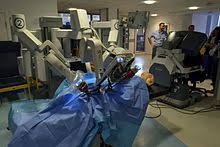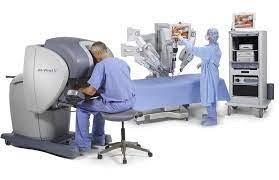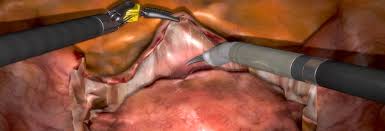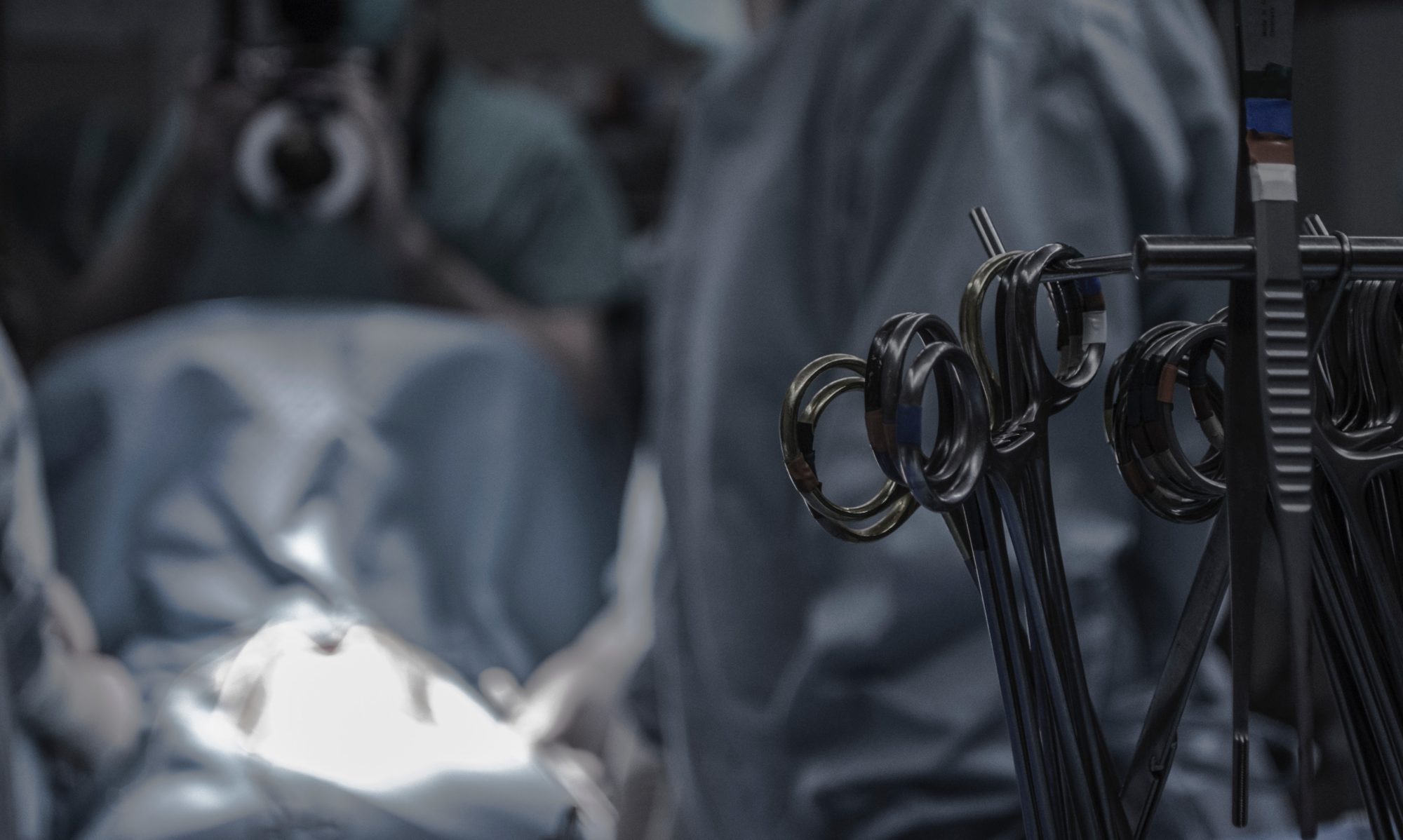
The Da Vinci® surgical robot from Intuitive Surgical Inc. has been in use at Clinique La Source since 2008 and at Clinique Cecil since 2012. This robot is the most widely used system on the market and the one with the greatest development. It is employed in a multidisciplinary setting that includes digestive, urological, and gynecological surgery. Thanks to successful collaboration among various surgeons, the robot at Clinique La Source is one of the most frequently used in Switzerland, and even in the French-speaking world.
Strictly speaking, it is not a robot in the true sense, as it does not perform autonomous movements. It is a sterile machine equipped with a camera and four articulated arms, which are positioned inside the patient.

- Only the surgeon controls the movements, using a manipulation console.
- The operator is always present in the operating room, although in theory the console and the machine could function from two different locations (telesurgery).
- During the operation, the surgeon sits at a console that controls the machine, reducing fatigue and improving concentration, especially during long procedures. The surgeon does not need to be in sterile attire and can control up to three arms carrying different instruments with various functions (for example cutting, grasping, suturing). The fourth arm controls a special and unique camera that provides a 3D view inside the patient. In addition, a zoom of up to 10× allows the finest anatomical details to be distinguished.
- Alongside vision, the surgeon can set a degree of control for the instruments, enabling very precise movements that would normally be difficult to perform.
- A surgical assistant and a specialized scrub nurse are always present in sterile attire beside the patient. They change the instruments as the operation progresses, ensure the correct positioning of the robot’s arms, and deliver the sutures and implants needed for the procedure inside the patient.

Numerous studies on this type of system have demonstrated, depending on the procedure: reduced bleeding, decreased postoperative pain, as well as a lower risk of infection or other complications. All of this contributes to a smoother hospital stay, a faster return home, and under better conditions.
Due to significantly improved visualization and greater precision of movements compared with standard endoscopic surgery, it has been shown that during certain colon resections, the nerves supplying the urogenital organs can be better identified and preserved. Likewise, complex digestive sutures are of much higher quality in procedures such as obesity surgery (e.g., gastric bypass), colon surgery, and esophageal surgery.

Surgeons wishing to operate with the Da Vinci robot must undergo mandatory training. Initially, they become familiar with console manipulation using a simulator. After this first step, they are invited to work with teams experienced in robotic surgery to refine their operative technique. They must then complete specific training, usually conducted on pigs or cadavers in specialized institutes.
Subsequently, their first procedures are performed with the assistance of experienced operators. This training, lasting more than 6 months, is essential to acquire and maintain the necessary mastery of the robot. The frequency of use is also very important. Like an airplane pilot, the surgeon must maintain proficiency through a minimum of 20 procedures per year.
In Lausanne, only a few physicians accredited at Clinique La Source and Clinique Cecil, who have completed the aforementioned training, are authorized to perform procedures using the Da Vinci® robot. Dr. Allemann is one of them. A member of the La Source–CHUV robotic surgery committee since its creation in 2011, he contributed to the development of the first and largest robotic surgery center in the region.
With more than 450 Da Vinci® procedures performed in 2022 (colon, esophagus, gastric bypass, hiatal hernia), he is one of the leaders of this technique in French-speaking Switzerland. In 2021, he was invited to the prestigious Académie Française de Chirurgie to present his work on robotic surgery for esophageal cancer. Together with the surgical team at Clinique La Source, he developed an innovative robotic technique, entirely new in Europe, which drastically reduces local complications associated with esophageal surgery.
In bariatric surgery (treatment of obesity), the collaboration between Dr. Allemann and Dr. Ghavami, a Lausanne pioneer in minimally invasive surgery, led to the development of a fully standardized, fast, cost-effective, and safe gastric bypass technique. This enabled the Obesity Medical-Surgical Center (CMCO) to become the largest center in Lausanne and its surroundings, with nearly 100 patients operated on per year today.
